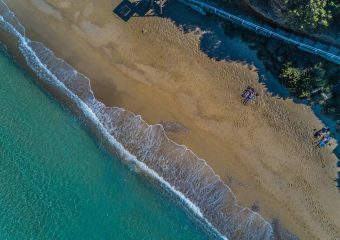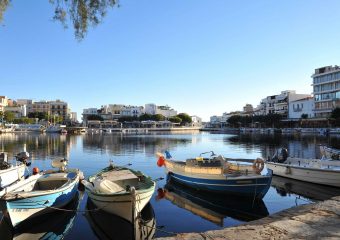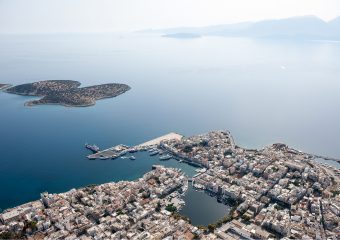Monasteries & churches
Religion always played a pivotal role in Cretan life. The biggest number of monasteries is in the area of Mirabello, which was justifiably called the “Mount Athos of Crete”.
Panagia Kera in Kritsa is one of the most significant religious monuments in Crete. Its incredible frescoes and different styles used make this the most important monument of the area. Particular mention should be made to the depiction of Saint Francis of Assisi in the central aisle of the church, as well as to the scenes from the occult gospels on the aisle of Agia Anna.
The Franciscan monastery Fraro in Neapoli also surely worth a visit, and is where monk Petros Filargos, who later became Pope Alexander the Fifth, lived.
RELIGION IN FIGURES
Christian Orthodox
28 historical churches
7 significant monasteries
Favourite
Top picks
Megali Panagia
The metropolitan church of Megali Panagia, dedicated to the Assumption of the Virgin Mary, stands majestically at the northern end of the main square of Neapoli.
View MoreDon't miss
The Catholic Monastery of Fraro
Its founding dates back to the second half of the 14th century, when monk Petros Filagris, who later became Pope Alexander the 5th, lived.
View MoreReligious Trandition
Religious tradition is very intense in all areas of Crete and is present in everyday life of the Cretans. Crete has an autonomous Archbishopric, separate from the rest of Greece. With thousands of places of worship and dozens of monasteries that have played a special role in the consolidation of Christianity and the struggle against the invaders, Crete is an ideal religious and historic destination.
Since the early Christian times, when Paul the Apostle visited Crete and preached the new religion for two years, the Christian tradition developed through the centuries. Remote places of monastic self-exile, traces of early Christian basilicas, cavernous chapels and painted Byzantine churches are found everywhere on Crete.
Easter in Agios Nikolaos
In the Greek Orthodox tradition, Spring and Easter always go hand in hand. And as Spring is the basis of all seasons, Easter and the Resurrection is the basis of life, in all its aspects and manifestations. That's why we celebrate Easter, as the most glorious and joyful celebration of Orthodoxy.
On the evening of Holy Saturday, right after the “Christ is Risen”, around Lake Voulismeni, located in the heart of the city of Agios Nikolaos, the spectacular burning of Judas takes place in the midst of fireworks, lit candles and exchanged wishes.
Agios Nikolaos is an area full of colors, customs and traditions throughout the year. The Holy Week, as well as the Resurrection in Agios Nikolaos and all its municipal units allow locals and foreign visitors to participate, get to know, be accommodated, but also experience this great celebration in a unique way.
August 15th in Crete
Religion and festivities are closely linked to the character of the Cretans cult and of course to Agios Nikolaos municipality. After all, the area of Ano Mirabello is also known as the “Mount Athos of Crete” because of its numerous monasteries and churches.
The festivities for the 15th of August (Assumption of the Virgin Mary), also known as the “Easter of Summer”, are particularly important. Many churches all over Crete celebrate on this day and many local festivities are organised. In our area, the most important celebrations take place in Neapoli and the procession of the holy icon of the Virgin Mary is at the very heart of them. The Virgin Mary is the town’s protector and patron saint. Moreover, Neapoli used to be Lassithi prefecture’s historical capital and is where the headquarters of Holy Metropolis of Petra and Herronisos are located next to the Metropolitan Cathedral of Megali Panagia (the Great Virgin Mary) which is the largest church in Lassithi prefecture and one of the largest in Crete. The festivities last two to three days and most of them take place on the vast main square of Neapoli. Music, sport events and celebrations complement the religious devotion of the inhabitants and create a unique event at the heart of summer which attracts visitors from all over Crete.
Easter is meant to be a symbol of hope, renewal and new life.



